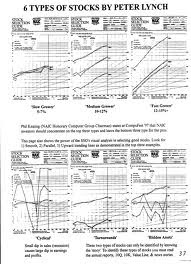Investors have different objectives, such as growth or income, and different investment horizons. Hence, they seek out stocks that have the qualities that they look for. To satisfy this need, stocks have been categorized according to their investment characteristics. The most common categories are listed below.
Blue-Chip Stocks
Blue-chip stocks are stocks of large, stable companies that have a long history of stable earnings and dividends, and are typified by the stocks composing the Dow Jones Industrial Average, including General Electric, IBM, Microsoft, and Pfizer. Because of their large size, there is virtually no potential for a high growth rate, so most of the return of these stocks is in the form of dividends. However, capital gains can be earned from these stocks if they are bought in a bear market, when stock prices are depressed overall. For instance, during the credit crisis of November and December, 2008, and the early part of 2009, Microsoft was trading below $20 per share, whereas before this, Microsoft had been trading at around $30 per share for a long time. It's reasonable to assume, given Microsoft's strong financial position, that its stock price will return to $30 a share, and, perhaps, surpass it.
Income Stocks
Income stocks generate most of their returns in dividends, and the dividends—unlike the dividends of preferred stock or the interest payments of bonds—will, in many cases, grow continuously year after year as the companies' earnings grow. These companies have a high dividend payout ratio because there are few opportunities to invest the money in the business that would yield a higher return on stockholders' equity. Hence, many of the these companies are already very large, and are also considered to be blue-chip companies, such as General Electric.
Cyclical Stocks
Cyclical stocks cycle with the economic cycles, going up strongly when the economy is growing and declining as the economy declines. Most of these companies supply capital equipment for businesses or big ticket items, such as cars and houses, for consumers. Some examples include Alcoa, Caterpillar, and Brunswick. The best time to buy these stocks is at the bottom of a business cycle, then sell when the cycle peeks.
Defensive Stocks
Defensive stocks are issued by companies that are resistant to the economic cycles, and may even profit from them. When consumers and businesses cut back spending, a few other businesses profit, either because they offer a way to cut costs, or because they have the lowest prices. For instance, during the credit crisis of late 2008 and early 2009, people tried to save by doing more for themselves. For instance, many people starting cutting hair for their families, or coloring their own hair to save the $200 that some beauty shops charge. This increased business for businesses that manufactured hair cutters and coloring kits. Auto repair shops tend to do better, because people cut back on the purchase of new cars, but cars nowadays are too complex for most people to fix on their own. And while most retailers were hurting significantly during the credit crisis, Wal-Mart was one of the few that actually thrived, since Wal-Mart is usually recognized as providing lower prices than other retailers.
Growth Stocks
Growth stocks are stocks of companies that reinvest most of their earnings into their businesses, because it can yield a higher return on stockholders' equity, and ultimately, a higher return to stockholders, in the form of capital gains, than if the money were paid out as dividends. Typically, these companies have high P/E ratios because investors expect high growth rates for the near future. Note, however, that growth stocks are risky. If a growth-oriented company doesn't grow as fast as anticipated, then its price will drop as investors lower its future prospects with the result that the P/E ratio declines. So even if earnings remain stable, the stock price will decline.
Another risk is bear markets—growth stocks will tend to decline much more than blue-chips or income stocks in a declining market, because investors become pessimistic, and will sell their stocks, especially those that pay no dividends.
One of the main benefits of growth stocks is that capital gains, especially long-term gains where the stock is held for at least 1 year, are generally taxed at a lower rate than dividends, which are taxed as ordinary income.
Tech Stocks
Tech stocks are the stocks of technology companies, which make computer equipment, communication devices, and other technological devices. Most tech stocks are listed on NASDAQ. The stocks of most tech companies are either considered growth stock or speculative stock; some are considered blue-chip, such as Intel or Microsoft. However, there is considerable risk in tech companies because research and development efforts are hard to evaluate, and since technology is continually evolving, it can quickly change the fortunes of many companies, especially when old products are displaced by new products.
Speculative Stocks
Speculative stocks are the stocks of companies that have little or no earnings, or widely varying earnings, but hold great potential for appreciation because they are tapping into a new market, are operating under new management, or are developing a potentially very lucrative product that could cause the stock price to zoom upward if the company is successful. Many Internet companies were considered speculative investments. During the stock market bubble of the latter half of the 1990's, many of these stocks had ridiculous market capitalizations, and yet, many of them had virtually no earnings, and many, if not most, have since then, imploded. A few, such as Amazon, have grown to become major corporations.
Many speculative stocks are traded frequently by investors—or some would say, gamblers—in the hope of making a profit by timing the market, since speculative stocks range wildly in price as their perceived prospects constantly change.


No comments:
Post a Comment